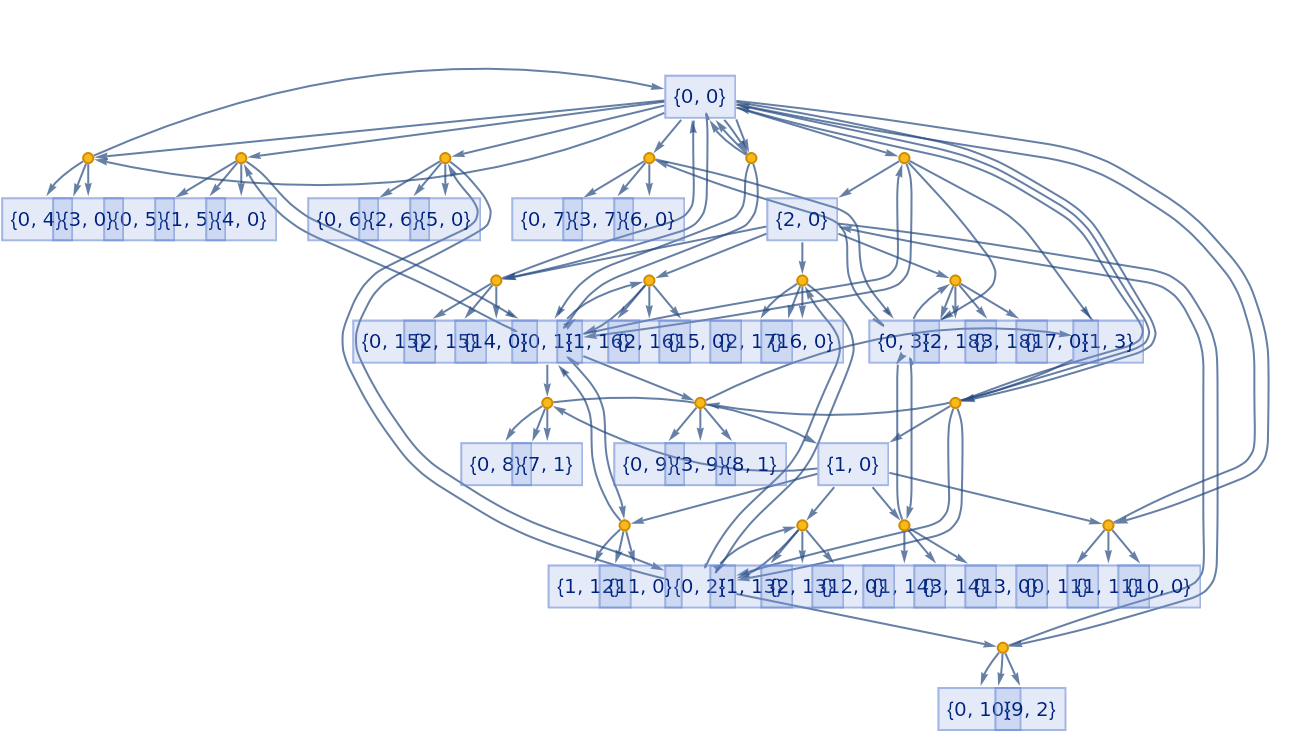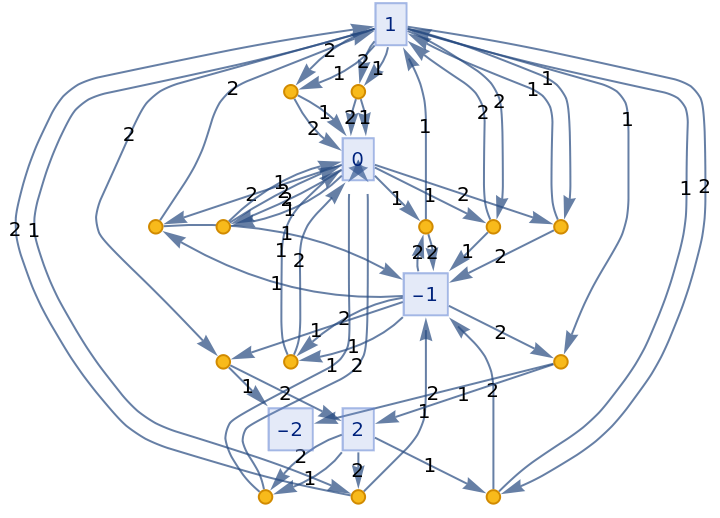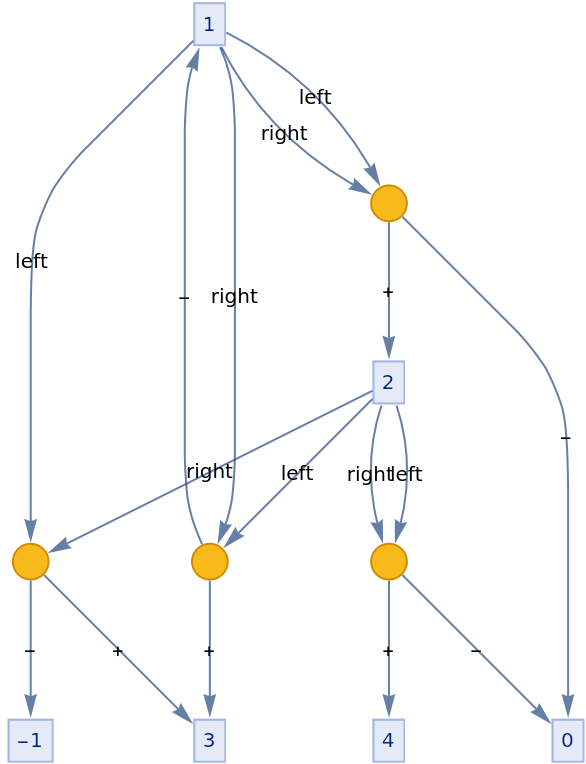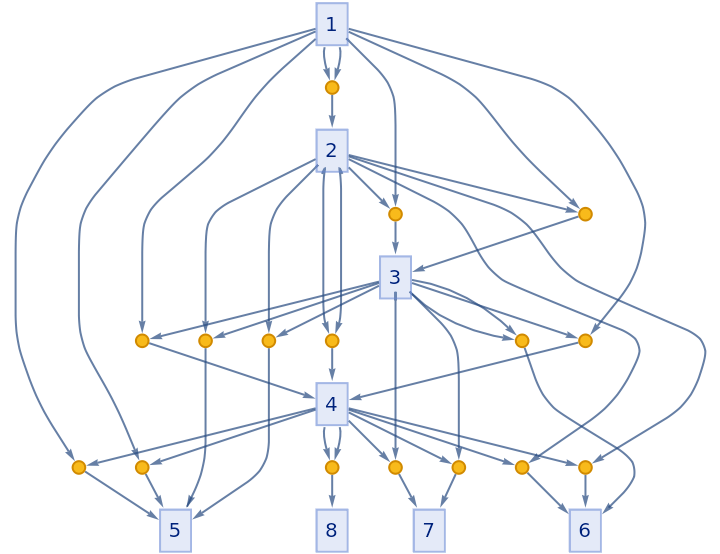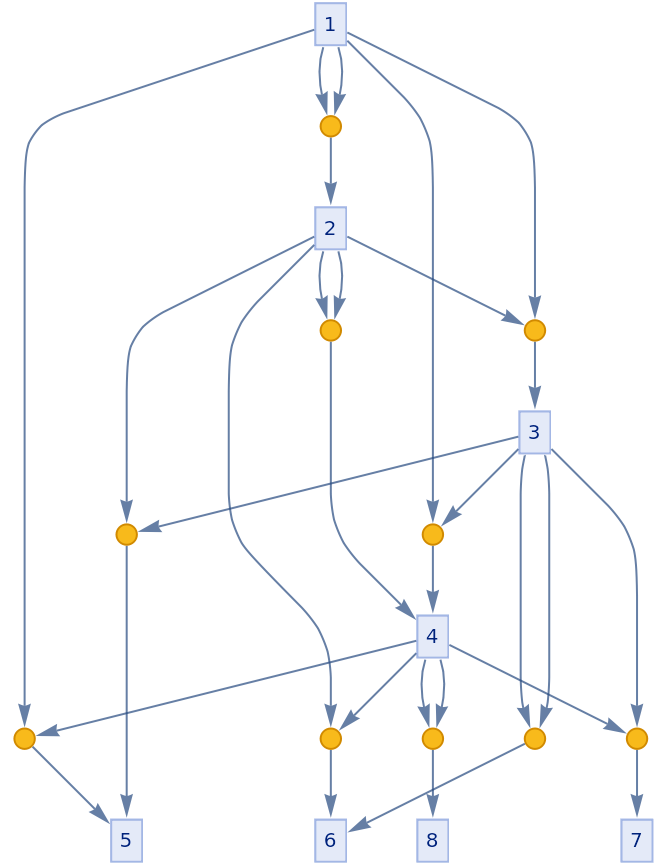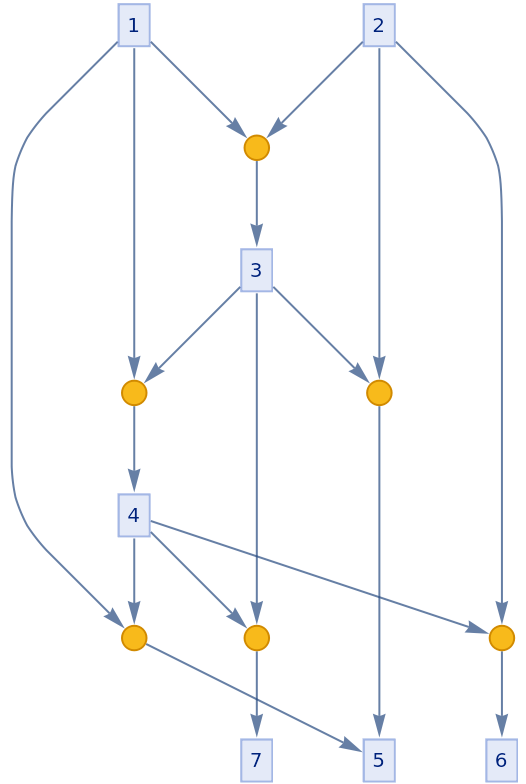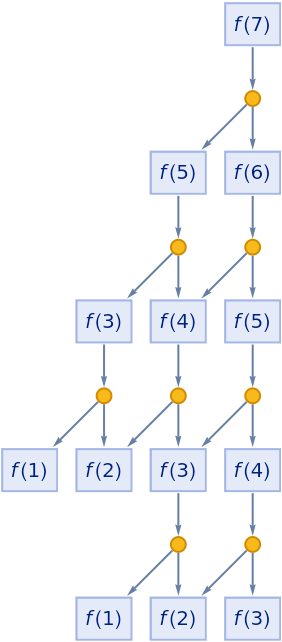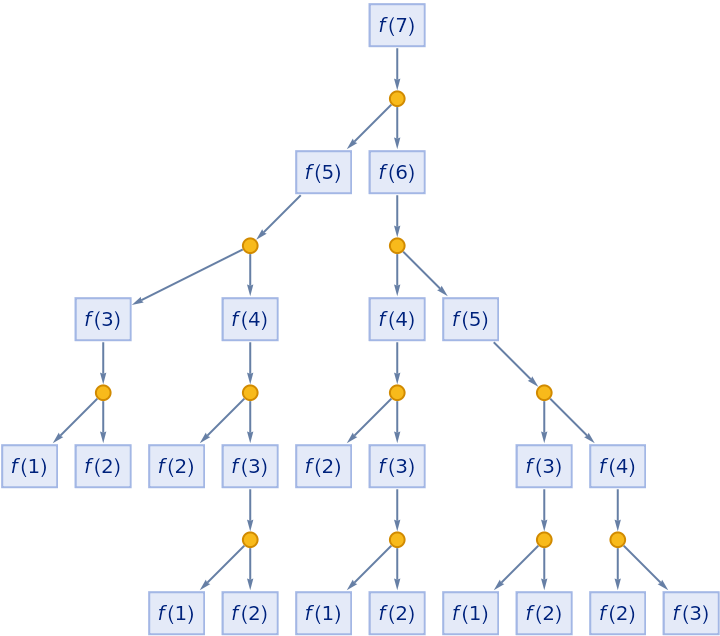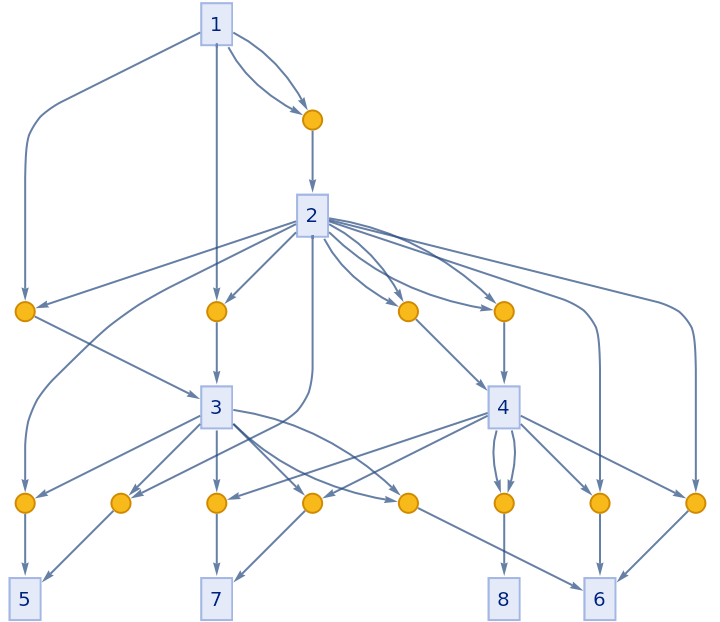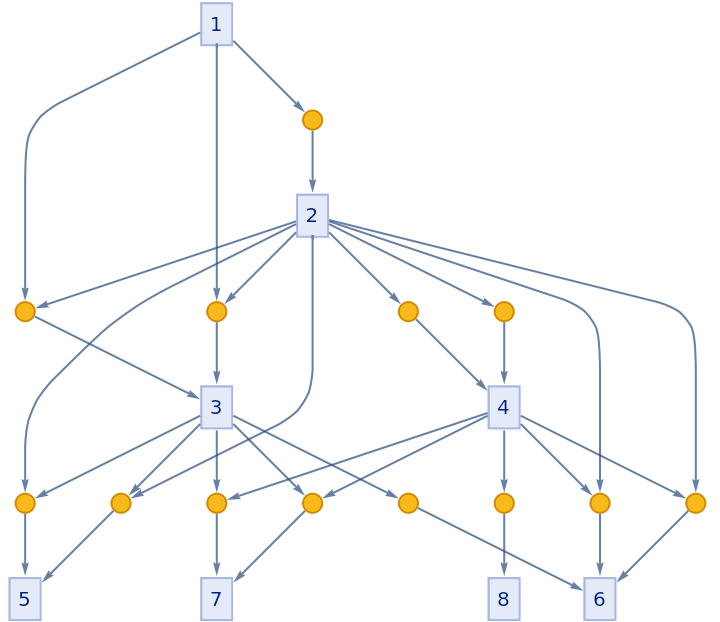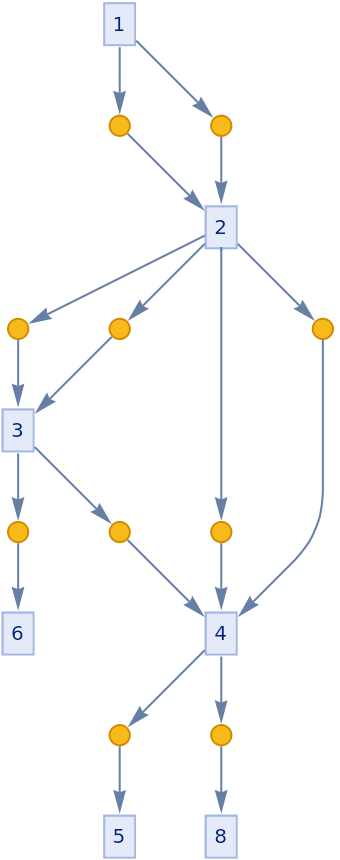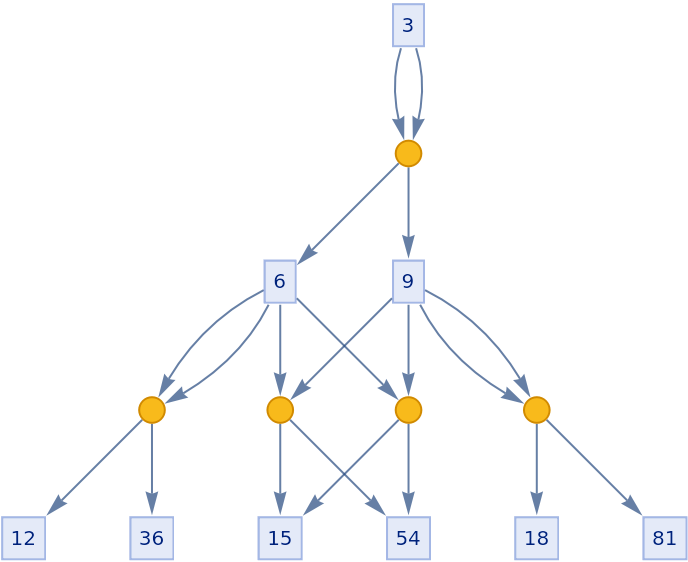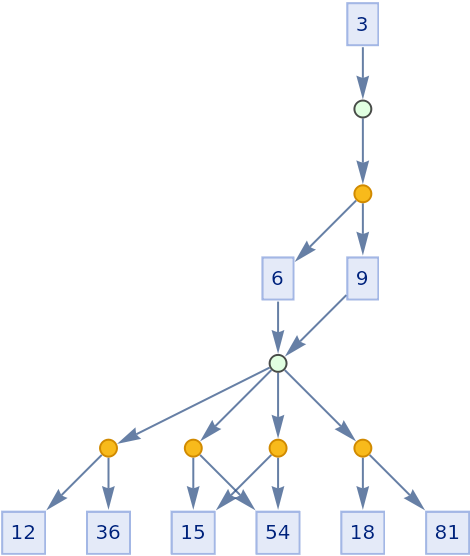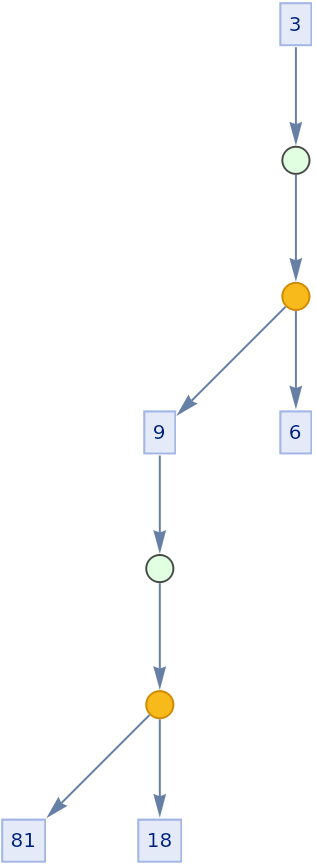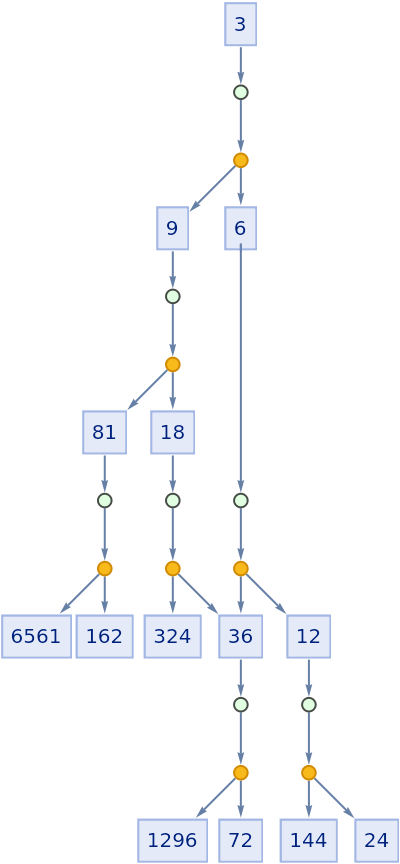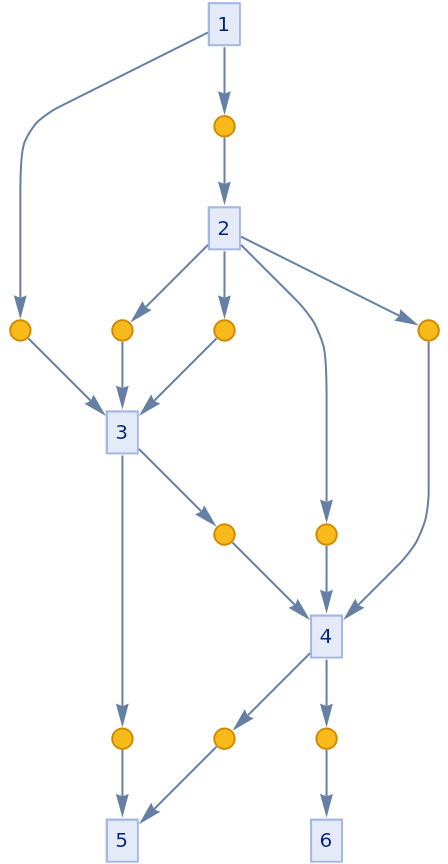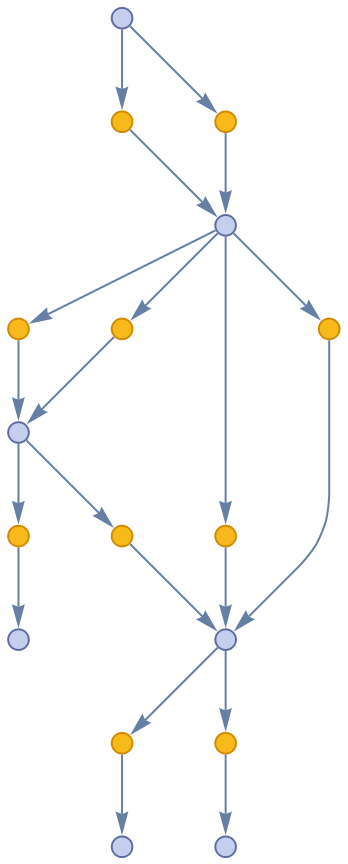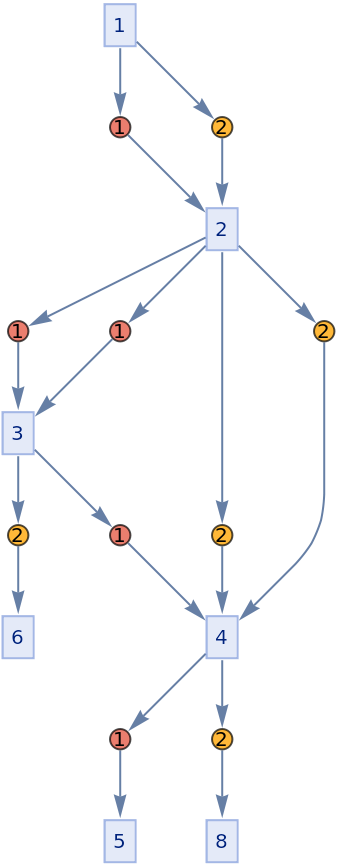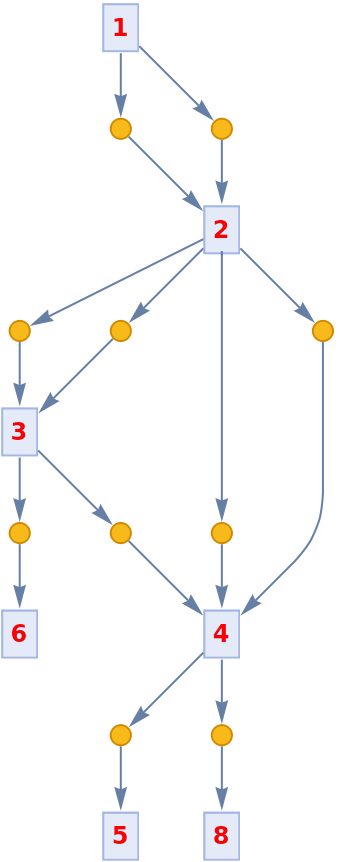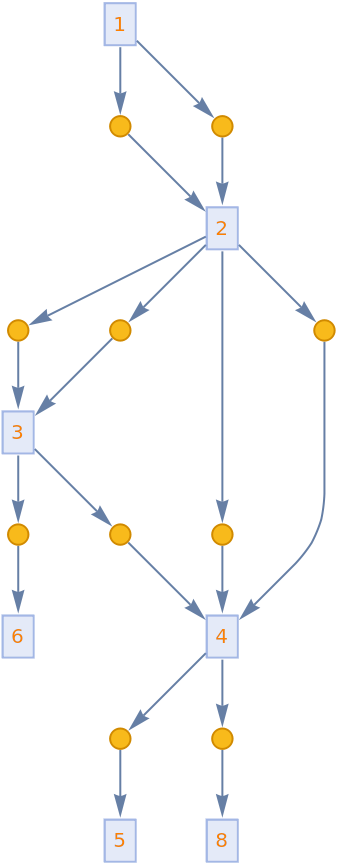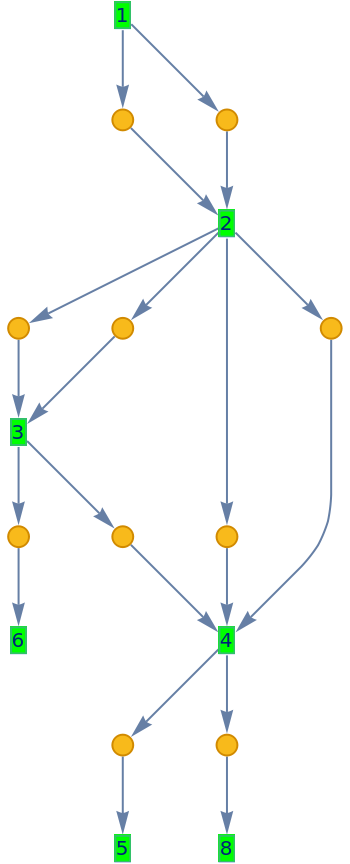Generate a token-event graph for multicomputational evolution according to particular rules
Contributed by:
Stephen Wolfram and Nikolay Murzin
Examples
Basic Examples (2)
Make a token-event graph of a simple rule:
Multiple rules:
Scope (3)
Make a WolframModel-like TokenEventGraph:
Edges are tagged by corresponding input or output list index:
Tag edges with keys by having associations on both sides of a rule:
Options (15)
Mode (1)
Mode of picking tokens can be one of: "Tuples" (default), "OrderedTuples", "Subsets":
TokenDeduplication (3)
Every token is deduplicated by default:
"TokenDeduplication"→False turns off deduplication across time steps:
"TokenDeduplication"→None turns off any deduplication:
EdgeDeduplication (1)
Remove multiedges:
EventDeduplication (1)
Keep or remove duplicate events:
StateVertices (1)
Include state vertices:
TokenDecompositionFunction (1)
Specify how states are decomposed into a list of tokens:
TokenRecombinationFunction (1)
Specify how tokens are recombined into states, default is a single state containing union of all output tokens. Here is an example of making a separate state from each token:
MultiOutputEvents (1)
Split each event with multiple outputs into separate events:
TokenLabeling (1)
Disable custom token labeling:
EventLabeling (1)
Label events by its rule index:
TokenRenderingFunction (1)
Specify rendering for the token:
TokenStyleOptions (1)
Provide style options for token boxes:
TokenFrameOptions (1)
Provide frame options for token boxes:
Version History
-
3.1.0
– 23 October 2024
-
3.0.0
– 22 April 2024
-
2.2.0
– 14 March 2022
-
2.1.0
– 07 March 2022
-
2.0.0
– 23 February 2022
-
1.2.0
– 15 February 2022
-
1.1.2
– 19 January 2022
Related Resources

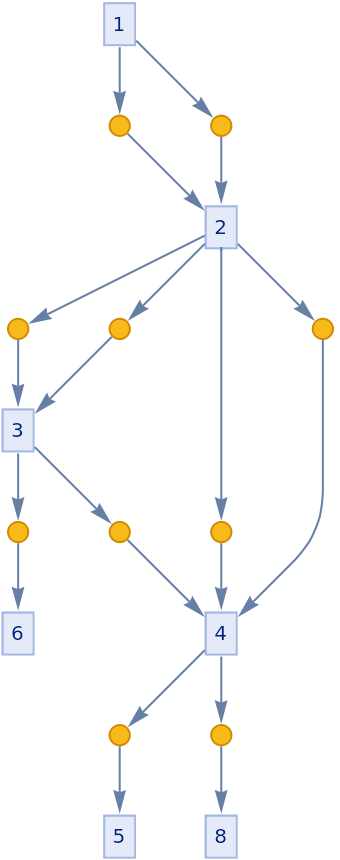
![Module[{w = 0}, ResourceFunction["TokenEventGraph", ResourceVersion->"2.2.0"][{{{x_, y_}, {y_, z_}} :> {{w++, y}, {y, z}, {z, w}, {x, w}}}, {{0, 0}}, 3, AspectRatio -> 1/2]]](https://www.wolframcloud.com/obj/resourcesystem/images/55d/55d93118-ad15-4514-be21-45bd34fdde29/2-2-0/7f34d283ed104cf1.png)
